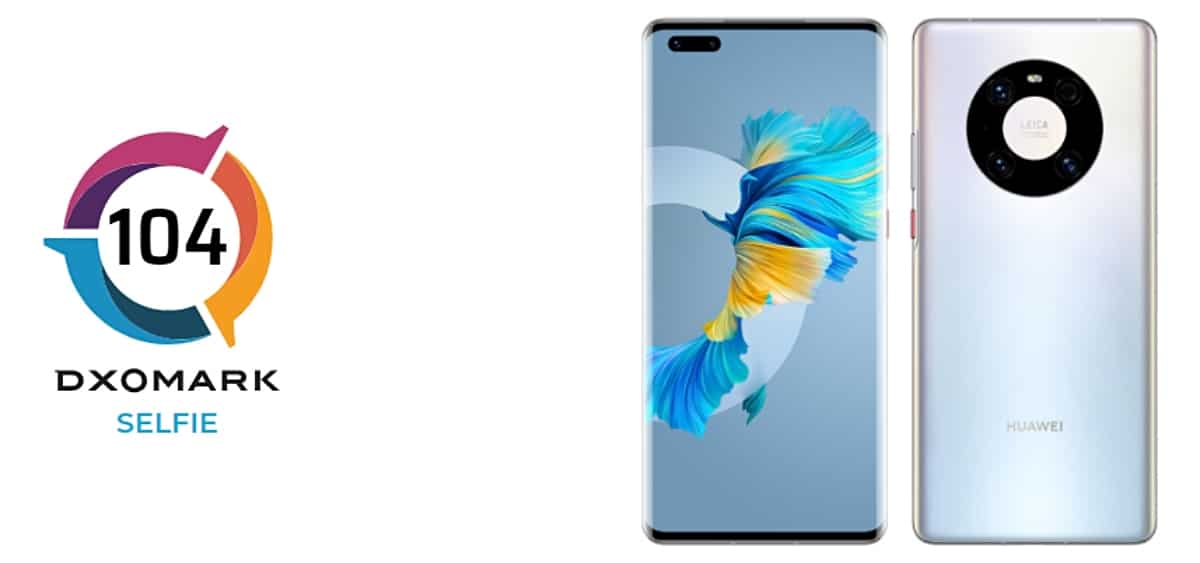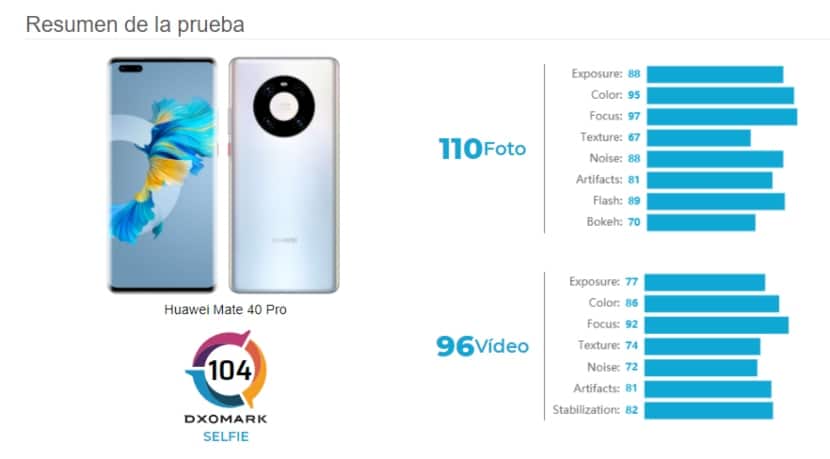
Shortly after Huawei's Mate 40 series was launched, something that happened on October 22, we reviewed the rear camera review that DxOMark posted about it Mate 40 Pro. The test platform rated this phone as number 1 in its ranking, being the one that offered the best photo results in most of its analysis and camera tests.
Huawei, with this smartphone, shows once again that it is one of the companies that offers the best sections in its high-end range.
This is what DxOMark says about the front camera of the Huawei Mate 40 Pro
With an overall score of 104 in the selfie camera section, el Huawei Mate 40 Pro is the new number one in the DxOMark ranking, beating its stable companion P40 Pro by one point and the Asus ZenFone 7 Pro by three points. It has also achieved the highest photo sub-score to date, with 110 points. This outstanding score is based on class-leading performance on many attributes and very few obvious defects.

Huawei Mate 40 Pro camera test results on DxOMark
In tests that the DxOMark team carried out, the front camera offers good facial exposures even in low light levels and also offers a wide dynamic range, which is beneficial in incandescent lighting situations. The latter is also particularly useful in backlit situations, where the background is brighter than the subject, and in other high-contrast scenes.
On the other hand, it was determined that the colors achieved with the main sensor, which is 13 MP and is accompanied by a ToF lens, are pleasant and very well reproduced, with a good white balance in low light conditions. However, in other conditions there may be some changes in white balance and skin tone.
The Mate 40 Pro front camera comes with a very simple fixed focus solution, but it still scores very high on focus in tests performed. A very wide depth of field means that subjects are well in focus in close-up shots and when captured at arm's length. However, the detail is slightly lower at a distance of 120 cm from the selfie stick, as well as on subjects at a greater distance from the camera and in the background, describes DxOMark in its review.
There's also a reduction in detail in low-light conditions, but the front camera still holds up quite well in low-light conditions. On the positive side, image noise is very well under control in all shooting conditionsBut, in low light, the P40 Pro produces slightly less noise than the new Mate 40 Pro.
- group photo
- Bokeh photo
In very dark conditions, you can use the Mate 40 Pro's screen flash, which provides good exposures, but flash images show some vignetting and the white balance can be a bit shaky when shooting with the flash. DxOMark testers also observed some image artifacts in regular shots, including facial rendering artifacts, anamorphosis instabilities, and color quantification.
In portrait mode, the camera is capable of creating images of people with a nice simulated bokeh effect and a blurred background. However, despite having a dedicated time-of-flight depth sensor, depth estimation errors are quite frequent along the edges of the front subject. So, at least under close inspection, it's obvious that the effect is a computer simulation rather than something real.
How is the video recorded with the front camera?
Tested at 4K resolution and 30 frames per second (fps), the Huawei Mate 40 Pro also stood out exceptionally well in the video tests performed and, with 96 points, equaled the score of the current leader in this category, which is the Asus ZenFone 7 Pro.
Selfie video clips show good facial exposure in most conditions and pleasant colors with accurate white balance. The camera records good details in both bright outdoor light and typical indoor lighting. However, there is some loss of detail in low light. Noise is visible in video clips indoors and in low light. In turn, as in still image mode, the lens' wide depth of field helps keep subjects in focus at a range of distances.
DxOMark also observed some video artifacts, for example color quantization in low light and some moving texture artifacts, but the camera's video stabilization works very effectively, keeping things steady when holding the phone in your hand. or walk while recording. In summary, we are facing one of the best front cameras to record.

